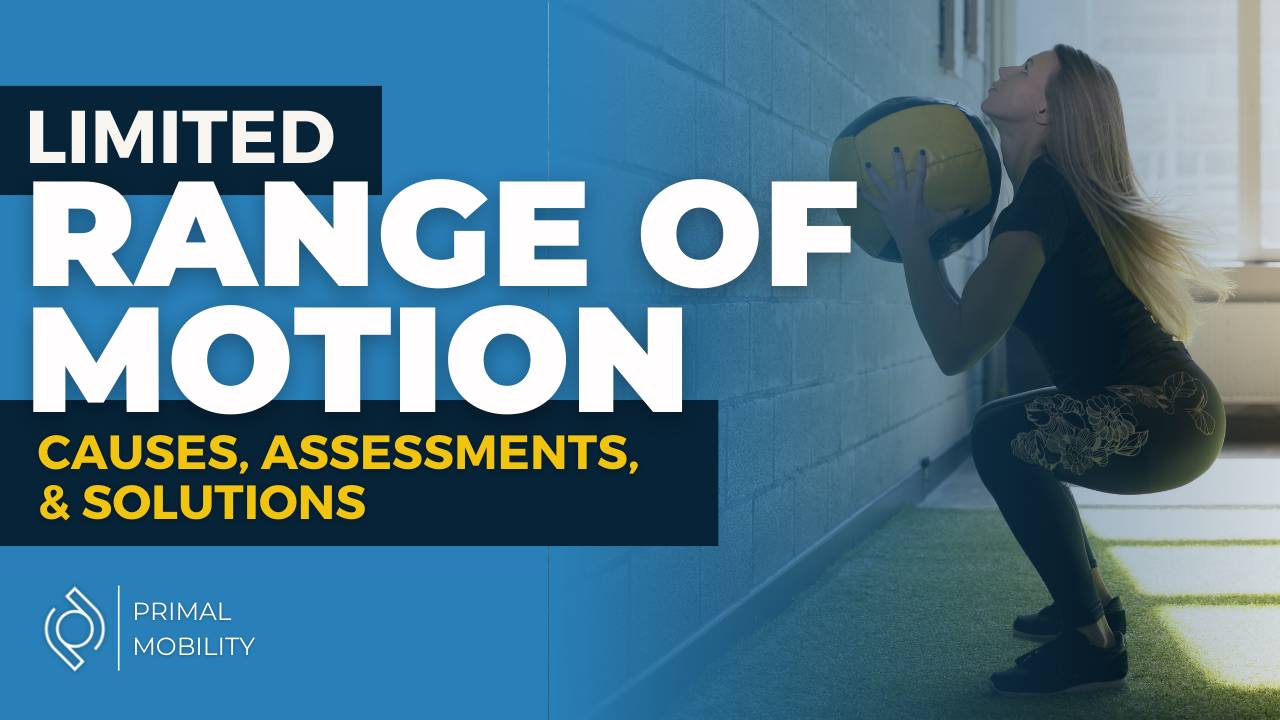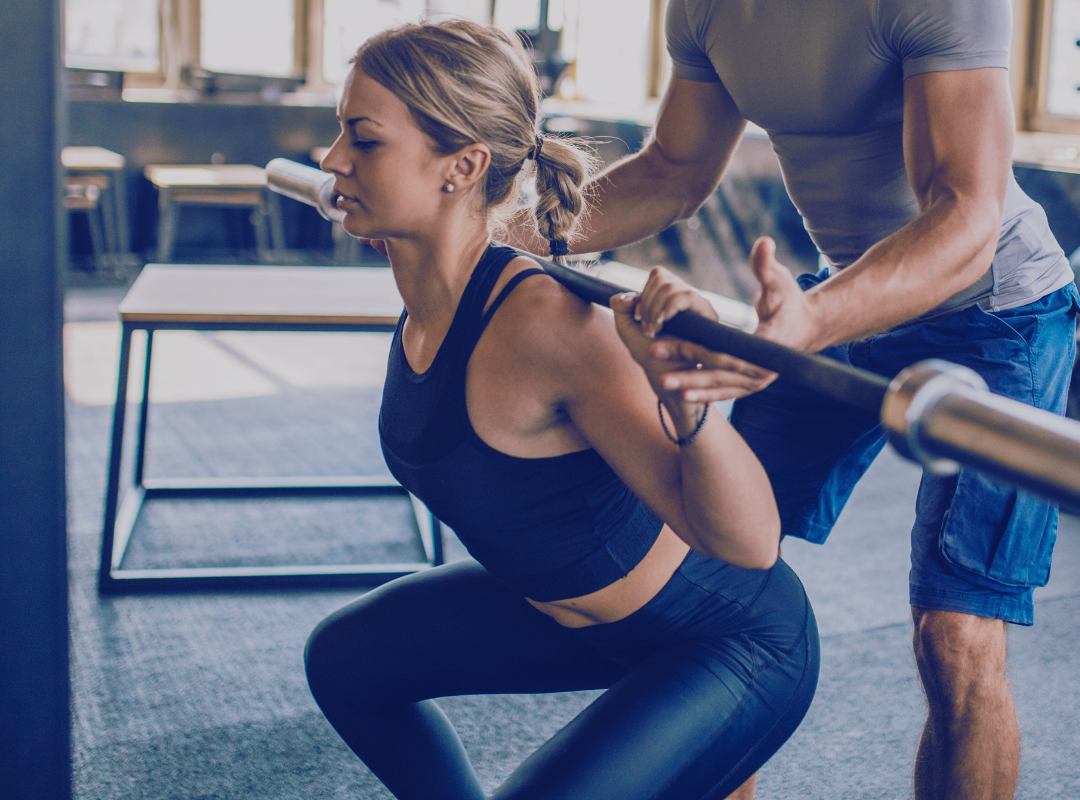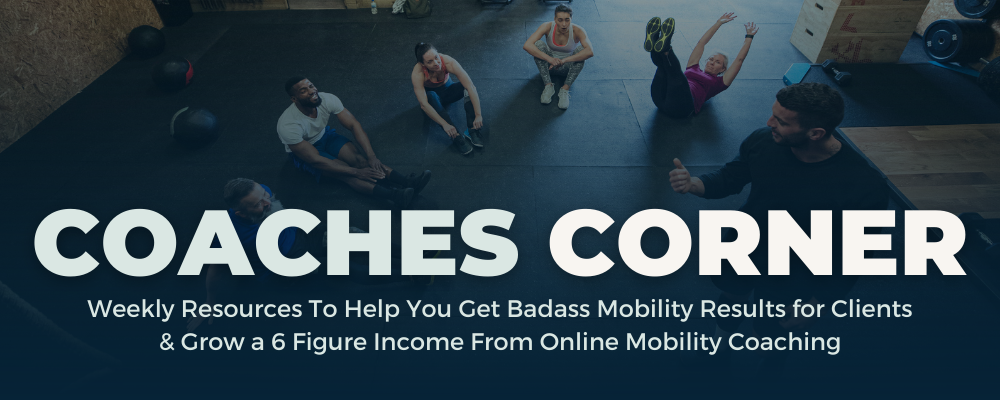
Do you struggle to improve your client’s range of motion (ROM)? The most common approach used by coaches to improve ROM is passive stretching. If you are reading this article, you are probably curious as to why your client’s ROM is not improving with your stretches. That’s because passively working your client’s ROM is only a piece of the puzzle.
In this article, we will dive into the potential causes of their limited ROM and how to assess to understand further where their challenges lie. Finally, we’ll provide you with the strategies we use at Primal Mobility to improve your clients' ranges of motion, which will majorly impact their movement, pain levels, and quality of life.
But first, subscribe to our exclusive weekly email designed exclusively for coaches and aspiring coaches to help you get badass mobility results for your clients and build your 6-figure online mobility coaching business.
Identifying the Causes of their Limited ROM
When it comes to addressing a client’s limited range of motion, understanding the root cause is essential. But how can you tell if your client’s ROM issues are due to stiff muscles or something else? In this section of the blog, we will explore potential causes and discuss ways to assess those causes in order to develop an effective plan for improving your client's ROM.
Medical History
Gathering your client’s medical history can reveal much about their current struggles and will ultimately guide your assessment and analysis. For example, you will suspect some deficits (ROM and strength) in a client’s ankle if they report having multiple ankle sprains in the past.
You will also want to ask about past orthopedic surgeries, other acute or chronic injuries, and if they followed any rehabilitation program by a medical professional afterward.
Common structures that can limit one’s ROM:
- The muscles and their corresponding tendons play a significant role in determining our available ROM, and our nervous system and receptors within the muscles and tendons regulate this process. Under various circumstances, such as sustained postures, weakness, pain, or stress, a muscle can restrict the range of motion (ROM) when it remains partially contracted for an extended period.
- Ligaments, conversely, are sturdy tissues, providing passive stability to limit excessive movements and active stability through proprioceptive receptors. While injured ligaments, typically resulting from a sprain, would increase ROM, unless the ligament is completely torn, individuals will likely experience difficulty moving the affected joints through their normal range. The body responds to a lack of stability by increasing joint stiffness to compensate for the compromised ligament(s).
- The joint capsule, a sac which envelops the joint space, also has a role in stability, like the ligaments. In its natural state, the joint capsule serves the dual purpose of preventing bone slippage or abnormal movements (such as dislocation or subluxation) while allowing for full and unrestricted motion at each joint. The joint capsule, normally flexible, can tighten over time due to the absence of movement at the joint, limiting the range of motion and further constraining mobility.
- Each individual can present variations in the alignment of a joint due to structural differences, and the most common example is the hips. Without getting into details, an individual may present anatomically with hips rotated backward, limiting the possibilities of achieving deep hip flexion; this factor is unmodifiable.
The client’s medical history will ultimately guide your assessment and analysis. Identifying which structures are affected based on the gathered information may be helpful when creating your plan of action to improve your client’s ROM, but as you will learn, it is not essential.
Assessing Range of Motion Limitations
Before we plunge into the strategies to improve the range of motion, you must assess and not simply guess where the limitations lie within a joint.

Goniometers for Accurate Measurement
A goniometer is used in primary care, sports medicine, physical therapy, and biomechanics to assess the limited joint range of motion (ROM). It helps determine the degree of movement in a joint to evaluate joint ROM, monitor progress in rehabilitation, or diagnose joint-related conditions.
Most in-person coaches will not have access to a goniometer, nor will they want to waste their time using one. Online coaches can use a protractor app on their client’s videos or pictures, but this can be daunting. Therefore, we recommend practicing eyeballing your client’s ranges.
Eyeball Approach for Estimated Measurement
As a coach that wants to utilize this approach, you must first understand what is considered great and poor range of motion at each joint. You may then categorize each joint function (i.e. flexion, external rotation, internal rotation) as great, good or poor.
Typically, we should have an almost equal range of motion on both sides. Therefore, if you suspect a limited range of motion on one side, you will want to compare to their non-problematic side for any differences. If necessary, you can take pictures of their end ranges to help make this side-by-side comparison.
Passive vs. Active Range of Motion Assessment
Assessing both passive and active can help identify potential structures causing the limited range of motion. Passive range of motion refers to a joint's movement facilitated by an external force (such as another person, a strap or a wall) without any active muscle contraction. Active range of motion refers to the joint movement achieved through voluntary muscular contraction by the individual without any external assistance. In active ROM, the individual independently moves their joint through its full range of motion using muscle strength and control. Active range of motion is usually less than passive range of motion.
Here are two scenarios to keep in mind:
Scenario 1: Significantly more passive ROM than active ROM
This scenario suggests weakness in the muscles responsible for this joint function as they cannot independently achieve anywhere close to the range of motion passively available at the joint through muscular contractions. Thus, stretching is not the solution.
Scenario 2: Equal amounts of passive ROM and active ROM with pain and ROM restriction.
In this scenario, you can suspect that something more profound (such as the joint capsule or other structures within) is limiting the joint. Here, stretching is only part of the solution.
Let’s discuss how you should approach your mobility programming.
Strategies for Improving Range of Motion
Improving a client's range of motion (ROM) is a challenging task for coaches, and the most common approach used is passive stretching. However, this can be ineffective if other underlying factors are not addressed. In order to effectively improve ROM, it’s important to understand what structures may be limiting their mobility and then create an effective plan of action. Here we discuss strategies for improving your client’s ROM that go beyond just stretching.

Target the agonist and antagonist.
An active range of motion is achieved when opposing muscles contract and relax, resulting in joint movement. For example, allowing the elbow to bend requires the biceps (agonist) to contract while the triceps (antagonist) muscles relax. Stretching usually only targets the antagonist. Yes, we want the antagonist to lengthen at its full potential, but we also wish for the agonist to be able to engage through full ROM.
Influence the nervous system.
As previously mentioned, the nervous system can influence our range of motion through certain protective reflexes; rapid changes in ROM or load can trigger these reflexes causing the inability to improve your range of motion further. Thus, quality of movement through awareness, connection, and control is crucial when doing mobility work. Explain the intention of each exercise you program for your client, and further cue them on breathing.
Always follow with strengthening.
Strength is the final piece to practical mobility training, specifically in your deepest ranges of motion. This last step will not only relieve your clients' tightness, aches and pain complaints, but they will also gain confidence in their movement again. As coaches, that’s what we aim for!
The Primal Method includes five pillars that touch each strategy: Awareness & Connection, Building New Ranges, Stability, Control, and Strength. If you wish to further improve your mobility training knowledge, it's time to enroll in the Primal Mobility Coaching Certification and Mentorship Program. We're leading the mobility industry and on a mission to help 10,000 coaches build 6-figure online mobility coaching businesses. Will you be one of them?
Coach V, Senior Coach & Head of Education, Primal Mobility Inc.




